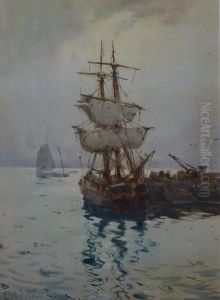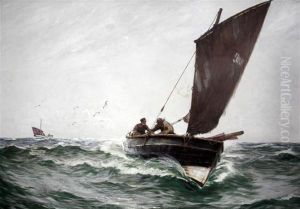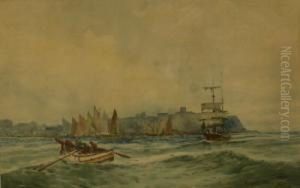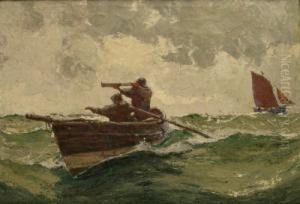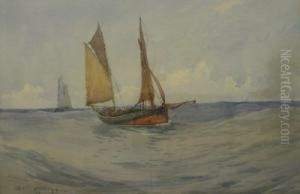Ernst Dade Paintings
Ernst Dade was a German painter known for his contribution to the field of maritime art. Born on January 24, 1864, in Altona, which was then a town in the Prussian province of Schleswig-Holstein and is now part of Hamburg, Germany, Dade was originally trained as a decorator before he became interested in painting. He pursued his passion for art at the Kunstakademie Düsseldorf, where he studied under the tutelage of renowned teachers such as the marine painter Eduard von Gebhardt.
After completing his studies, Dade traveled extensively, which greatly influenced his artistic work. He painted scenes of the North Sea and the Baltic Sea, capturing the changing moods of the sea and the lives of fishermen and sailors. His works often depict ships and coastal landscapes, characterized by a keen sense of realism and attention to detail.
Dade was part of a movement of artists who sought to accurately represent the maritime world. He was active at a time when marine painting was particularly popular in Germany, and his works were well received by the public and collectors. Dade also contributed to the arts community as a member of various artist associations.
During his career, Ernst Dade participated in numerous exhibitions and gained recognition for his contributions to German art. His paintings are now part of several museum collections and continue to be appreciated for their depiction of maritime life and scenery.
Ernst Dade passed away on April 7, 1934, in Munich, Germany. Despite not being as widely recognized as some of his contemporaries, Dade's work remains an important part of the maritime art tradition, reflecting the cultural and historical significance of the sea in German society.




